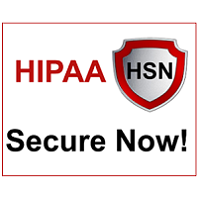 By Art Gross, President and CEO, HIPAA Secure Now!
By Art Gross, President and CEO, HIPAA Secure Now!
Twitter: @HIPAASecureNow
Read other articles by this author
We all know (or should know) that human error accounts for the majority of breaches. Phishing gives hackers entry to a business’s front door by manipulating the employees who work there.
Phishing is when a cyberattack is disguised and delivered using email as the carrier or weapon. Through very convincing and cleverly designed messages, the recipient is tricked into believing that the content or sender is authentic, and they then act upon instructions within the message. This means that the sender’s identity is hidden and typically, the link within the message or an attachment is what deploys the attack when the user clicks on it.
With recent reports citing 51% of organizations suffering from a ransomware attack, the 3 days of downtime that follow can be debilitating. And in 2020, most businesses have suffered enough. It’s time that everyone and every business put cybersecurity at the top of their priorities.
The Enemy Within
How and why is a phishing attack so successful? According to the recent findings by Mimecast, the one thing that global business has in common is email. And human employees of course. With work from home being the structure for employees that were once office-based, hackers have a wider net to cast their viruses out to.
How?
These home offices are essentially remote offices without IT support or coverage, making them an easy target. Additionally, a remote worker that is new to this environment is using different hardware and software and is more relaxed in their home, therefore their guard is more likely to be down when it comes to a threat of any kind. Simply put, phishing is an easy way to target the masses, and coupled with the likelihood of human error, the outcome for success increases daily. Employees don’t act with malicious intent, they simply let their guard down or were uninformed. Hackers know that the easiest way to get in is by using a “key” – something that an uninformed and relaxed employee easily and unknowingly provides.
According to the Mimecast report:
- 55% of the companies do not provide awareness training on a frequent basis
- 31% experienced data loss due to a lack of cyber resilience preparedness
- 58% saw phishing attacks increase with 82% experiencing downtime from an attack
We see in these numbers an awareness of the danger due to experience, and a lack of planning and preparation for when a cyberattack does occur. Clearly businesses need to take that information and address the need for a cybersecurity response plan. This should start with a security risk assessment that identifies the potential gaps and risks, and then implements a plan to close those gaps, lower the risks, and provide ongoing security awareness training. There should also be a plan in place to react if an attack occurs that includes cybersecurity insurance. The entire (and ongoing) life cycle of staying secure needs to be at the top of any business’s plan and mission for moving forward. With the increasing risk, ignoring it would mean that there may not be a business to protect in the event of an attack.
This article was originally published on HIPAA Secure Now! and is republished here with permission. HIPAA Secure Now offers annual online subscriptions to help covered entities and business associates keep up with compliance. Learn more here.
 HIPAA Secure Now! now offers PHIshMD training for CEs and BAs to help protect your organization from security threats.
HIPAA Secure Now! now offers PHIshMD training for CEs and BAs to help protect your organization from security threats.
Technology safeguards put a virtual wall around your network, but what happens when the bad actors climb over that wall? It’s up to your employees. Over 90% of breaches get caused by human error according to Kaspersky Lab, and if you’re not educating users HOW to protect your organization in this ever-changing threat landscape, your organization could be next. LEARN MORE
